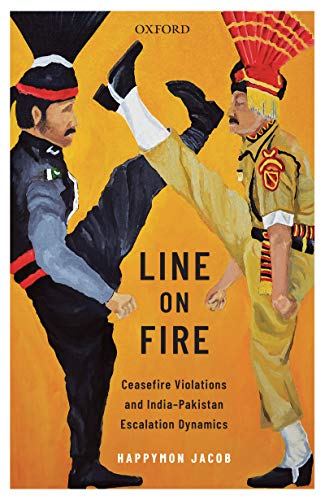Happymon Jacob is a rising-star, academic and journalist, a columnist with The Hindu and anchor of a web series on strategic affairs at The Wire, besides teaching at a leading international relations faculty at the Jawaharlal Nehru University. His book justifies the preceding sentence. He has taken pains in using escalation theory to interpret the data gathered on ceasefire violations since 2003 to reveal that India and the surrounding regions are sitting on a seemingly dormant, if not active, volcano. The data collation and analysis work was undertaken as part of a project he spearheads, India-Pakistan Conflict Monitor that has his doctoral student, Tanvi Kulkarni, assisting with the research.
Happymon makes the case that the ceasefire violations (CFV)––ever so routine as to be easily dismissed as inconsequential––not only have an inherent escalatory potential, but also serve to exacerbate crisis. Escalation is along three dimensions––political, diplomatic and military. In a key contribution, he reveals that CFVs are largely generated by ‘autonomous military factors’ (AMF) internal to the two militaries engaged in eye-ball-to-eye-ball confrontation on the Line of Control (LoC). He makes the case not only by looking at the data he has culled but also from eight case studies demonstrating the impetus to escalation stemming from CFVs.
Jacob’s finding is that the escalatory potential of CFVs can no longer be neglected since media-fanned nationalism may tie down a crisis decision maker’s hands, forcing a choice that may not be the rational and preferred option. His recommendation as a corollary is that an institutionalized regime along the LoC and the international boundary (IB) needs to be put in place.

